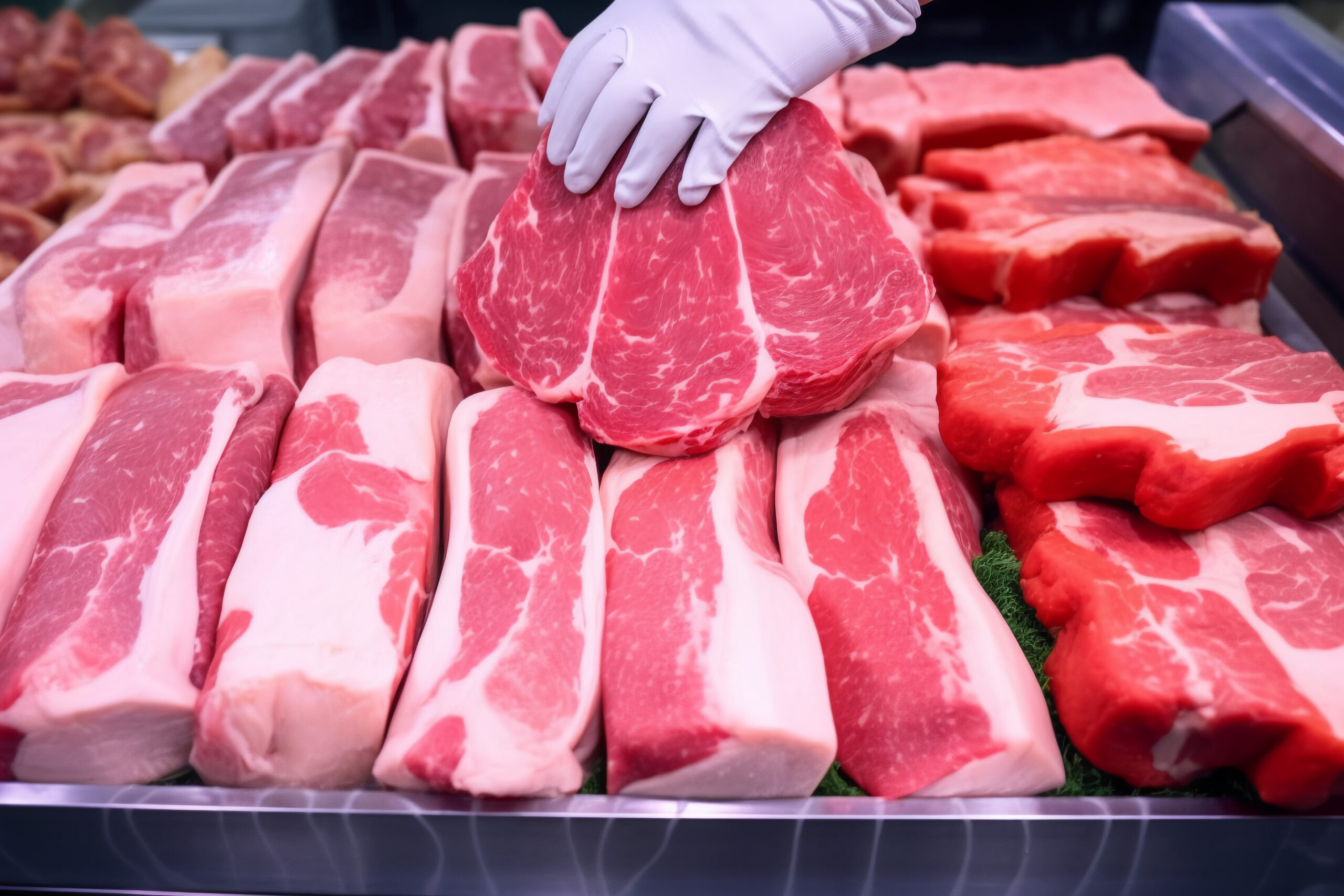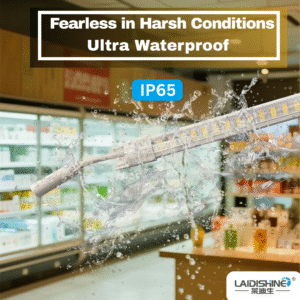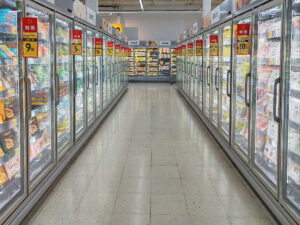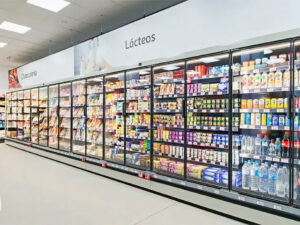The supermarket’s fresh section is a well-liked meeting place for important business sectors. Fresh items have a limited shelf life, and consumers have greater standards for commodities’ freshness of commodities. Customers are limited to using their natural visual perception to judge the freshness of meat items, with color serving as the most important criterion.
In light of this, a retailer’s job is to enhance the attractiveness and sales force of products, speed up the circulation of goods, effectively reduce the loss caused by expired goods, produce stable and sustained profit growth for supermarkets, and, on the one hand, help customers quickly see the product and make the right purchase decisions by using the right lighting and accurate and true display of the real state of meat products.
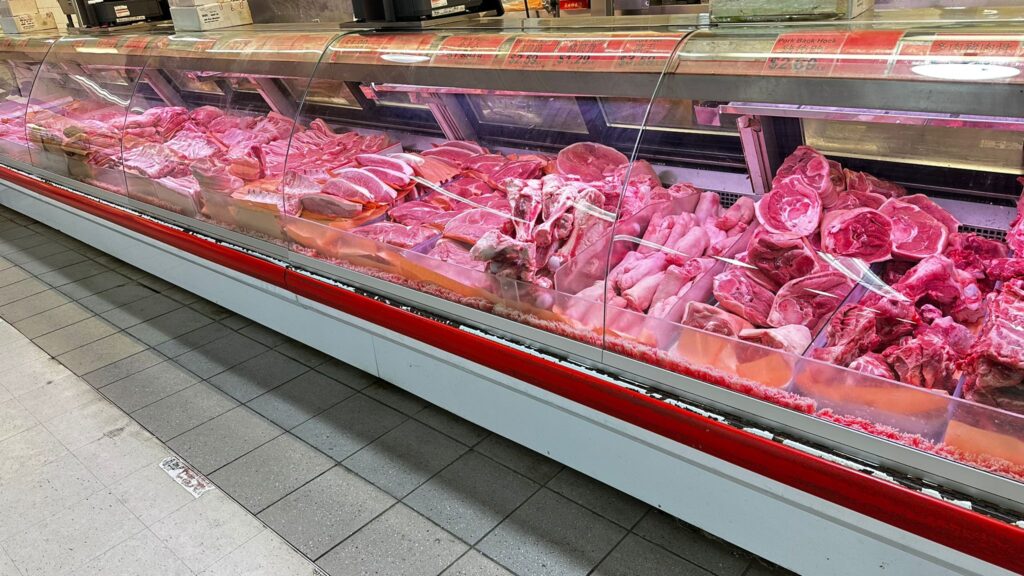
The degradation of raw meat that cannot be sold is the main concern of businesses, which raises expenses. Raw meat is prone to spoiling and bacterial growth. It also becomes unfit for sale after extended exposure to air and light, which raises prices. Supermarkets now typically use refrigeration or packaging to accomplish the preservation goal. The goal for shops is to minimize waste, sell meat as fast as possible, and display products. Customers view any minor discoloration as a drawback and may decide not to purchase, even if it is not a quality concern. Consumers are discerning.
Customers prioritize freshness, and they only pay for value.
For retailers, the most pressing concern in the fresh meat sales process is the rising costs caused by unsold and spoiled products. Fresh meat is inherently highly perishable; once exposed to light and air for extended periods, its quality rapidly deteriorates, leading to discoloration, off-odors, and other signs of spoilage. Ultimately, these products must be removed from shelves, imposing a significant financial burden on businesses.
Currently, supermarkets generally adopt vacuum-sealed packaging or refrigerated storage methods to extend the freshness period of fresh meat. However, for retailers, the real challenge extends far beyond that—how to ensure product freshness while simultaneously displaying goods in an appealing manner, thereby accelerating sales and minimizing waste, is the critical issue that needs urgent resolution. It’s crucial to understand that customers have extremely stringent standards for fresh meat quality; even slight discoloration, even if it’s not a quality issue, will be perceived as a sign of unfreshness, discouraging purchase intentions. After all, customers are only willing to pay for freshness.
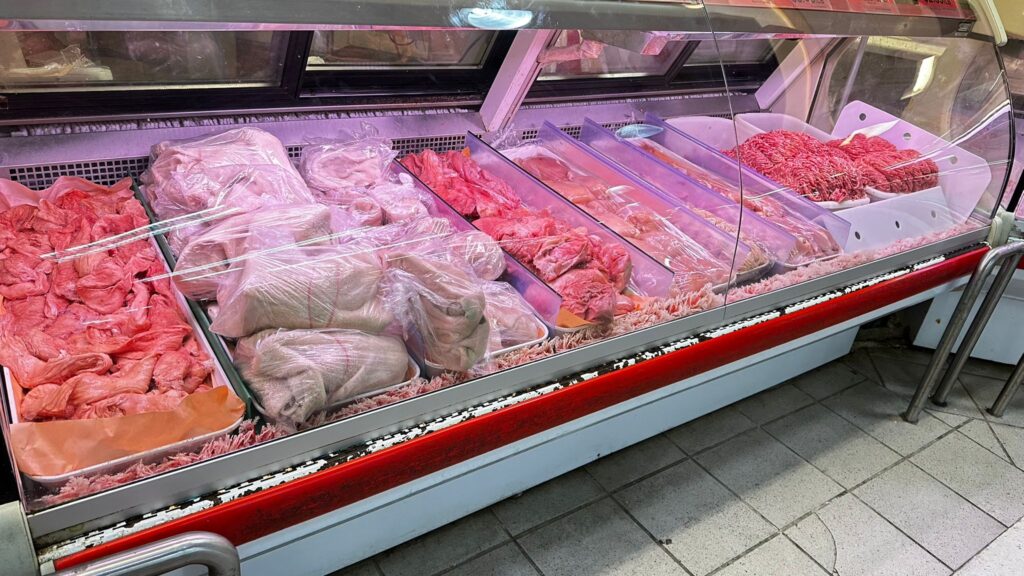
When premium meat is meticulously packaged with cling film, neatly arranged in boxes, and free of surface condensation, under proper lighting, the fresh meat appears ruddy and tender with white fat and red meat—a visual cue that often subconsciously convinces customers this is freshly packaged produce. This significantly boosts purchase intent and naturally accelerates sales speed. It is evident that strategic lighting design can enhance the appeal of fresh meat, further highlighting its freshness and high quality while imparting greater perceived value to the product. When customers intuitively recognize this value, they become willing to pay corresponding prices, ultimately achieving the retailer’s goal of maximizing product value.
How to choose lighting in the fresh meat area of a supermarket?
- Fresh meat is best illuminated with specialized color lighting, where true color rendering and enhanced visual effects are intertwined. It is crucial to select the appropriate color temperature and ensure higher color saturation to achieve an authentic representation of the meat’s colors.
- When fresh meat is exposed to light, temperature variations can accelerate its deterioration. Therefore, considerations should be given to the heat dissipation and energy consumption of the lighting fixtures.
- Easy replacement is desirable, as it significantly reduces long-term maintenance costs.
- Uniform illumination without dark areas is essential, as uneven lighting can negatively affect customers’ perception.
Choose Laidishine lighting to achieve a win-win situation of energy conservation and a sales boost.
- Retains the G13 lamp base, offering strong versatility and easy replacement.
- High color rendering index with no visible flicker.
- Features a semi-metal, semi-plastic exterior structure for excellent heat dissipation.
- High luminous efficacy and long service life.

Application Effect of Laidishine Lighting in the Fresh Food Area
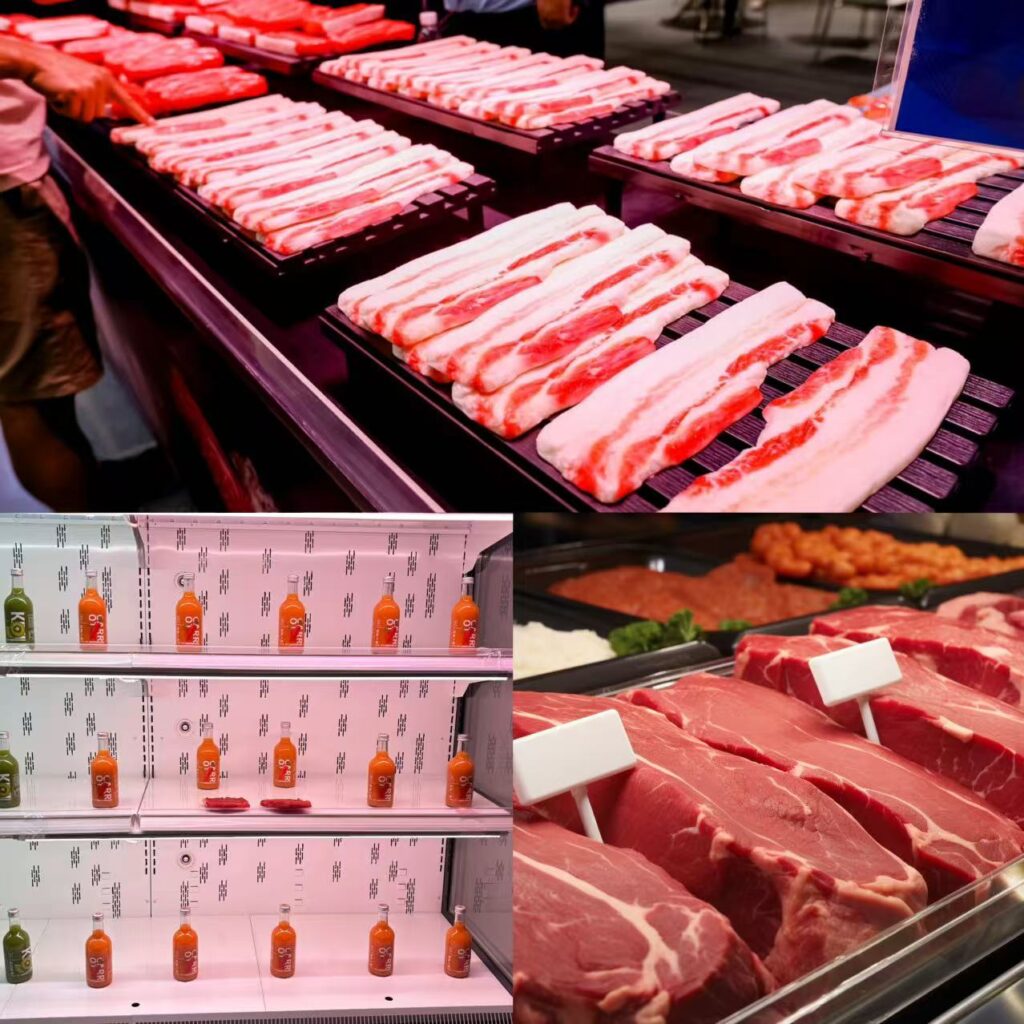
Leveraging its precise color temperature control, exceptional color rendering, excellent heat dissipation performance, convenient replacement design, uniform light distribution, and energy-saving longevity, Laidishine lighting creates an ideal lighting environment for fresh meat sales. It not only presents fresh meat in its most appealing form to customers, stimulating purchasing desire, but also helps retailers reduce waste, enhance efficiency, and achieve a win-win scenario of energy conservation and sales growth.

